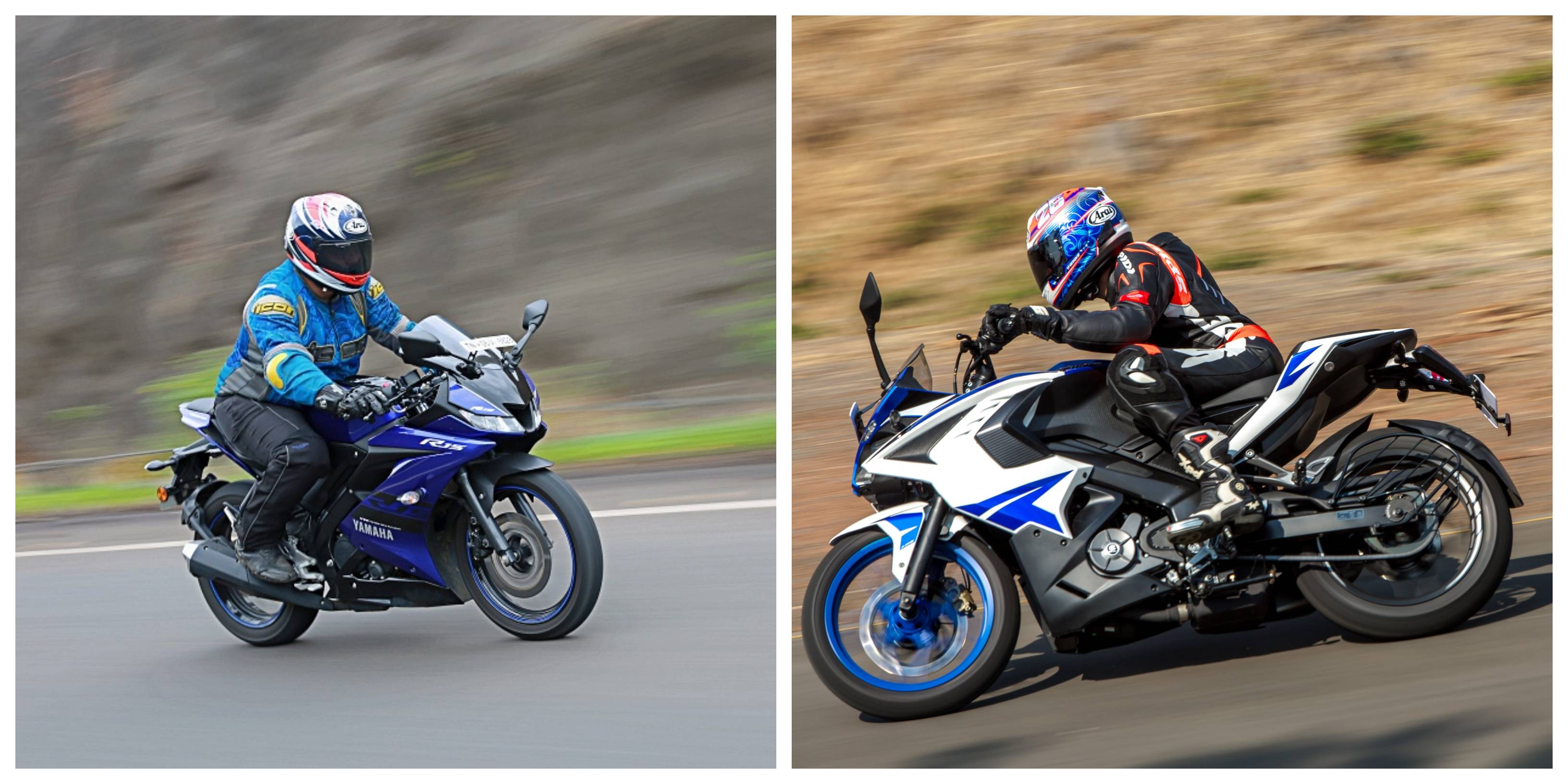Yamaha R15 v3.0 vs Bajaj Pulsar RS200: In Pics
Modified On May 6, 2019 05:44 PM By Niraj Kakadefor Yamaha yzf r15 v3
- 3225 Views
We compare two of India's sportiest looking entry-level faired bikes in detailed pictures

Looking for an entry-level sportbike? With an almost similar price tag of Rs 1.39 lakh (ex-showroom Delhi), we won’t blame you for being confused between the Yamaha R15 v3.0 and the Bajaj Pulsar RS200. While one is known for its top-notch Japanese engineering, the other is positioned as a value-for-money proposition. We compare the two in 9 detailed pictures
Design -
The third-gen Yamaha R15 takes its design cues from its bigger siblings, the R6 and the R1, which we’re certainly not complaining about. Bajaj’s RS200, on the other hand, doesn’t look very different from the SS200 concept shown at the Auto Expo 2016 which err...can be both a good and a bad thing.
Also Read - 2018 Yamaha YZF-R15 V3.0 Road Test Review

Pan to the R15’s rear and you’ll see a clean, proportionate look with a conventional triangular LED tail light setup. The RS200 gets a freely suspended tail light cluster, which adds to the unique look of the bike.

Don’t expect phenomenal build quality on either motorcycle. In fact, you might see some unsightly weld points and plastic panels with gaps on the Yamaha. In comparison, the plastic and switchgear quality on the RS200 is better.

Features -
Yamaha has equipped the R15 v3.0 with a fully digital instrument console, with readouts for fuel consumption, gear position indicator and a VVA indicator. The RS200 though, carries the same console as the Pulsar NS200 - a large analogue rev counter flanked by a digital speedometer on one end and tell-tale lights on the other.

Viewed head-on, the R15 V3.0’s gaping faux air duct flanked by slim LED headlamps certainly looks aggressive. The RS200’s front, though, is sure to divide opinions with its, let’s be honest, love it or hate it design. You get a couple of projectors at the front with a strip of LEDs which look like eyebrows and serve as pilot lamps.

Engine -
The engineers at Yamaha have worked on the R15 v3.0’s motor quite a bit. It receives a slight bump in engine capacity, displacing 155cc instead of 149cc, and also features VVA now. This has resulted in more power - 19.3PS at 10,000rpm, up from 17PS earlier. Torque, though, remains the same 15Nm as before but comes in at 8500rpm, which is 1000rpm higher than before. The RS200 gets the same engine from the NS200, however with fuel injection. The liquid-cooled, 199.5cc motor develops 24.5PS at 9750rpm and a maximum torque 18.6Nm at 8000rpm here.
Also Read - Bajaj Pulsar RS200: First Ride

Suspension -
Still based on the Deltabox frame, the new R15 gets a slightly revised subframe. With a rake smaller than both the earlier R15s, its 1325mm wheelbase is also shorter than the v2.0. The RS gets the same perimeter frame chassis, Nitrox monoshock at the rear and the same front telescopic suspension as the NS200. Although, here, the riding posture is slightly sportier, thanks to the clip-on handlebars but not as aggressive as say the RC200 or even the R15.

Braking -
Stopping power on the v3.0 comes from a 282mm front disc with a two-piston caliper and a 220mm disc at the rear, which offer brilliant bite. The R15 v3.0 comes with dual-channel ABS as standard. The RS200’s 300mm front and 230mm rear disc setup offers effective and sure-footed braking performance, aided by a single-channel ABS unit.

